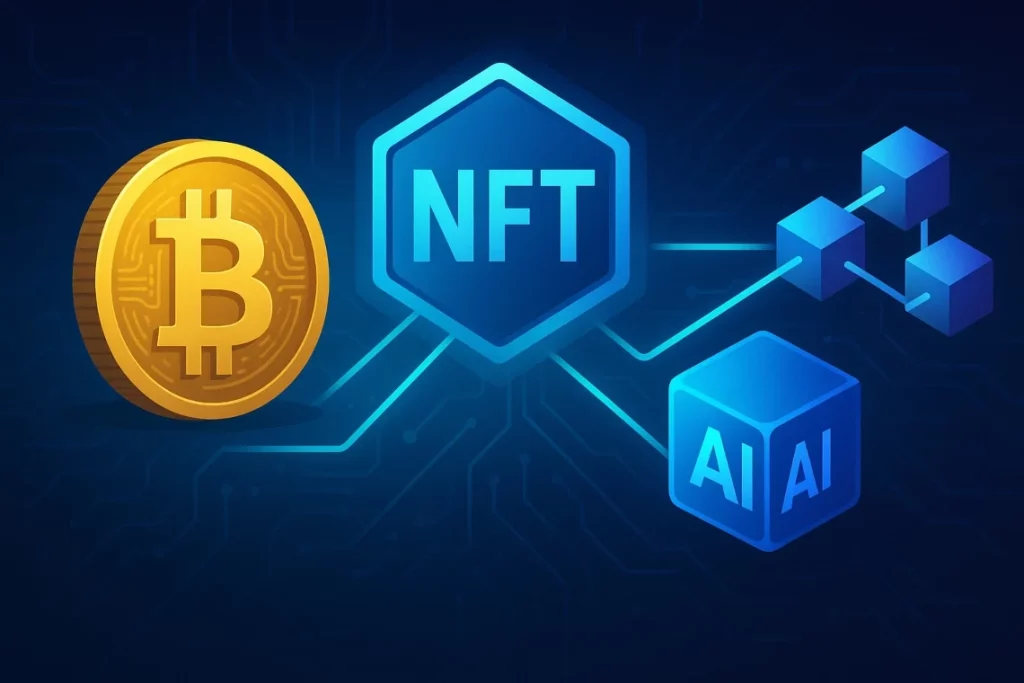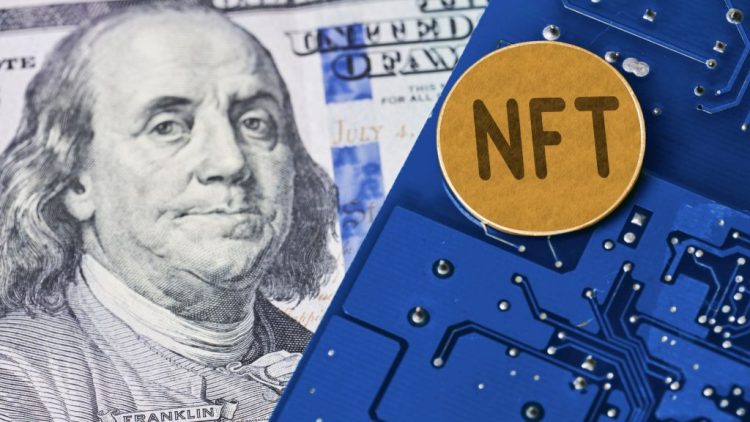In recent years, Non-Fungible Tokens (NFTs) have emerged as one of the most transformative and disruptive innovations in the digital space. The rise of NFTs has opened up new possibilities for digital ownership, creation, and trade, with the potential to reshape industries such as art, gaming, fashion, and entertainment. While NFTs initially gained attention through the sale of digital artwork, the scope of their influence is rapidly expanding, with their applications now extending into various sectors of the global economy.
As the NFT market continues to evolve, it holds immense potential to drive the growth of the global digital economy. By offering a new framework for the ownership and monetization of digital assets, NFTs could redefine how businesses, creators, and consumers interact with digital content. This article will explore how the NFT market is poised to contribute to the future of the global digital economy, the challenges it faces, and the emerging trends that could shape its growth trajectory.
1. Understanding the Role of NFTs in the Digital Economy
1.1. What Are NFTs?
NFTs are unique digital assets verified on a blockchain, typically Ethereum, that represent ownership of a specific item, whether it’s digital art, music, video clips, virtual real estate, or even tweets. Unlike cryptocurrencies such as Bitcoin or Ethereum, which are fungible and can be exchanged for equivalent units, NFTs are non-fungible, meaning each token is one-of-a-kind. This uniqueness is validated by the blockchain, which provides an immutable record of ownership and transaction history.
The blockchain technology underlying NFTs ensures that these assets are scarce, verifiable, and cannot be duplicated. This gives NFTs intrinsic value, especially in sectors like art and collectibles, where rarity is a key factor. The ability to prove ownership and provenance of digital goods has opened up new avenues for creators and consumers, allowing for the monetization of previously intangible or easily reproducible digital content.
1.2. The Global Digital Economy: A Snapshot
The global digital economy refers to the increasingly digitalized world of business, commerce, and finance. It includes e-commerce, digital services, online entertainment, and financial technologies, all of which have experienced explosive growth in recent years. According to a McKinsey report, the digital economy accounts for more than 15% of global GDP, and this number is expected to rise as more industries undergo digital transformation.
Within this broader digital economy, NFTs represent a significant development. They introduce a new mechanism for creating, distributing, and trading value in a purely digital format, without reliance on physical goods. The tokenization of digital assets allows creators, companies, and individuals to monetize digital goods in ways that were previously impossible, unlocking new economic opportunities and empowering a new generation of digital entrepreneurs.
2. NFTs as Catalysts for Innovation in Various Industries
NFTs are not just a passing trend—they are sparking innovation in multiple sectors of the digital economy. Below are some key industries where NFTs are making a substantial impact.
2.1. Art and Creative Industries
The art world was one of the first to embrace NFTs, with digital artists selling their works as unique, verifiable tokens. NFTs allow artists to retain control over their intellectual property while ensuring that buyers receive proof of ownership and authenticity. This has led to a surge in digital art sales, with platforms like OpenSea, Rarible, and SuperRare emerging as key marketplaces.
The NFT revolution in the art industry goes beyond simply buying and selling digital paintings. Artists can embed royalties into their NFT contracts, ensuring they receive a percentage of sales whenever their work changes hands. This dynamic creates a sustainable revenue stream for artists, enabling them to profit from their work long after the initial sale. As the NFT market matures, more artists from various disciplines—such as music, fashion, and literature—are exploring the potential of NFTs to expand their creative practices.
2.2. Gaming and Virtual Worlds
The gaming industry is another sector that has been significantly impacted by NFTs. Traditionally, in-game assets like skins, weapons, and characters were confined to a specific game and could not be traded outside of that ecosystem. With NFTs, however, players can now own unique in-game assets that can be traded, sold, or even used across multiple games and platforms.
Blockchain-based games, such as Axie Infinity, The Sandbox, and Decentraland, have already begun incorporating NFTs to enable true ownership of in-game assets. Players can earn NFTs by completing tasks, participating in battles, or creating in-game content, which they can then sell or trade on external marketplaces. This has created new revenue models for game developers and players alike, turning gaming into a legitimate avenue for economic participation in the digital economy.
Moreover, virtual worlds like Metaverse platforms have embraced NFTs as a way to represent ownership of virtual real estate, digital goods, and even experiences. This concept of “virtual ownership” is expanding rapidly, with the Metaverse becoming a focal point for the next generation of digital economies.
2.3. Music and Entertainment
NFTs are also making waves in the music and entertainment industries. Musicians and content creators are increasingly using NFTs to monetize their work, offering exclusive content, concert tickets, and merchandise through blockchain technology. This allows artists to directly engage with their fanbase, cutting out intermediaries like record labels and streaming platforms.
NFTs also allow for innovative business models, such as the sale of limited edition content, where fans can purchase exclusive music tracks, album artwork, and videos that cannot be replicated. In addition, music royalties can be coded into NFTs, ensuring that creators receive ongoing income from secondary sales.
The potential for NFTs to disrupt the entertainment industry is enormous, offering new revenue streams and enhancing the fan experience. As this trend gains momentum, we can expect NFTs to play an increasingly significant role in reshaping the way we consume and interact with music and other forms of entertainment.
2.4. Real Estate and Virtual Property
While physical real estate has been a cornerstone of global wealth, virtual real estate is emerging as a valuable asset in the digital economy. Virtual real estate in the Metaverse, powered by NFTs, enables users to purchase, sell, and develop parcels of virtual land in digital environments.
Platforms such as Decentraland, Somnium Space, and Cryptovoxels allow users to buy and trade virtual plots of land, with the potential to build businesses, host events, or develop digital properties. As virtual worlds continue to gain traction, the demand for virtual real estate is expected to increase, creating new markets and investment opportunities.
NFTs also provide a means for traditional real estate to embrace digitalization. Tokenizing physical properties as NFTs could potentially simplify the buying and selling process, providing greater transparency, faster transactions, and fractional ownership opportunities for real estate investors.

3. The Potential for NFTs to Drive the Global Digital Economy
3.1. New Revenue Models and Monetization Opportunities
NFTs offer creators, businesses, and individuals a completely new way to generate revenue. By enabling digital scarcity and ownership, NFTs create opportunities for new business models and innovative monetization strategies. Creators can monetize their work in ways that were previously difficult or impossible, such as through tokenized assets, exclusive content sales, or royalties from secondary market transactions.
Businesses can leverage NFTs to create unique digital products or services that have intrinsic value. Companies in industries like fashion, entertainment, and gaming can sell limited edition virtual items, fostering customer loyalty and engagement while also diversifying their revenue streams.
For consumers, NFTs provide opportunities to invest in and own digital assets that appreciate over time. This could pave the way for a new class of digital investors, with NFTs offering high returns for early adopters.
3.2. Democratizing Access and Participation
NFTs lower the barrier to entry for creators and consumers alike, enabling participation in a global digital economy. Unlike traditional industries where access is often limited by geography, financial resources, or industry gatekeepers, NFTs create opportunities for anyone with an internet connection to participate in the creation and exchange of value.
This democratization is particularly evident in the art and gaming industries, where artists and players from all over the world are leveraging NFTs to earn income, gain recognition, and build communities. NFTs have the potential to create a more inclusive digital economy, where the barriers to entry are significantly reduced and individuals have greater control over their digital assets.
3.3. Facilitating Global Trade and Investment
NFTs also hold promise in facilitating global trade and investment. As the NFT market grows, it could become a significant tool for cross-border transactions, allowing for the secure and efficient transfer of ownership of digital assets across borders. By leveraging the transparency and immutability of blockchain technology, NFTs can create trust and security in international trade.
Moreover, the liquidity of NFTs could attract institutional investors, further integrating NFTs into the traditional investment ecosystem. Tokenized ownership models could lead to fractional ownership of high-value assets like art, real estate, and collectibles, allowing a broader pool of investors to participate in markets that were previously inaccessible.
4. Challenges and Obstacles to Overcome
Despite the immense potential, the NFT market still faces several challenges that could hinder its long-term growth and adoption.
4.1. Environmental Concerns
The environmental impact of NFTs, primarily due to the energy consumption of blockchain networks like Ethereum, remains a significant concern. While Ethereum’s transition to Proof of Stake (PoS) aims to alleviate some of these issues, the broader NFT ecosystem will need to continue exploring sustainable solutions.
4.2. Market Volatility and Speculation
NFTs have been associated with extreme volatility, with some assets seeing dramatic price swings. While speculative activity has driven market growth, it also introduces uncertainty. As the market matures, it will need to
move beyond speculation to ensure sustainable growth.
4.3. Legal and Regulatory Issues
The regulatory landscape surrounding NFTs is still in its infancy. Issues related to intellectual property, taxation, and securities regulation need to be addressed to provide clarity and protect consumers and creators.
5. Conclusion: NFTs as a Pillar of the Future Digital Economy
The NFT market is poised for continued growth and has the potential to become a driving force in the global digital economy. By enabling unique ownership, creating new revenue models, and facilitating access to global markets, NFTs are set to transform industries and create new opportunities for creators, businesses, and investors alike.
While challenges remain, such as environmental concerns, market volatility, and regulatory uncertainty, the future of NFTs looks promising. As technology improves, and as the world continues to embrace digital transformation, NFTs will undoubtedly play a key role in shaping the future of the global digital economy. The continued development of NFTs will lead to more inclusive, sustainable, and innovative economic opportunities, fundamentally changing how we engage with digital content and the value we place on it.

















































